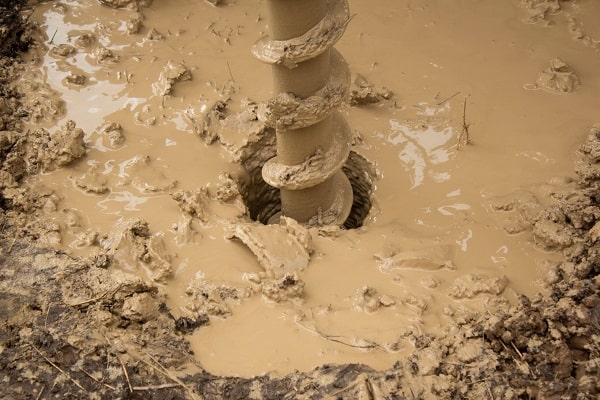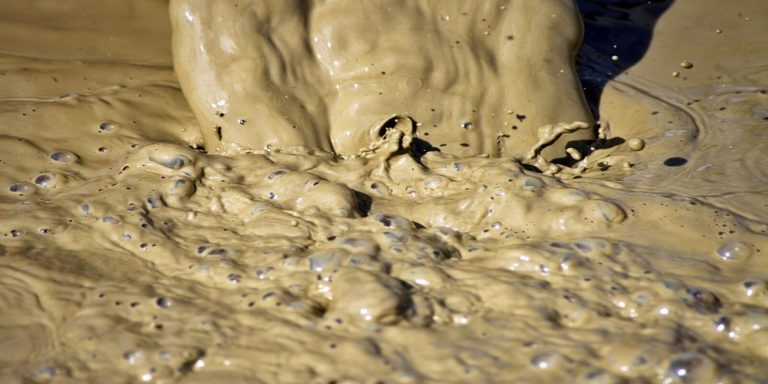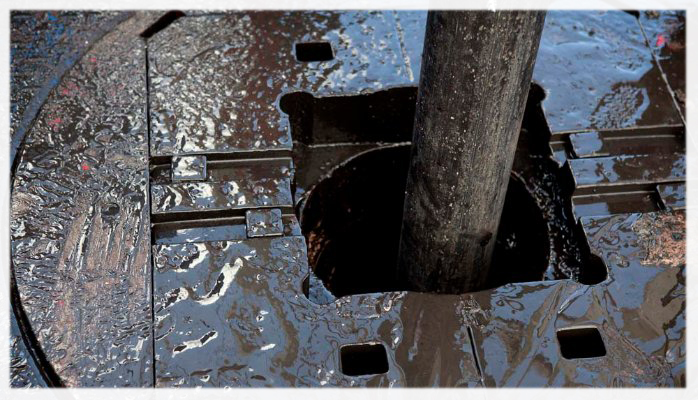In the dynamic world of oil and gas exploration, the significance of drilling mud, also known as drilling fluid, cannot be overstated. This heavy, viscous fluid mixture plays a pivotal role in drilling operations by carrying rock cuttings to the surface, lubricating and cooling the drill bit, and maintaining stability within the borehole. Let’s delve deeper into the world of drilling mud to understand its composition, functions, and impact on the petroleum engineering landscape.
Drilling mud is a specialized fluid mixture used extensively in the field of petroleum engineering during drilling operations. It serves a dual purpose: carrying rock cuttings to the surface and ensuring the smooth functioning of the drill bit. Its unique properties make it an indispensable component in drilling activities.
The functions of drilling mud are multifaceted. Firstly, it acts as a lubricant, reducing friction and preventing wear on the drill bit. Secondly, it carries rock cuttings to the surface, allowing for a clean drilling process. Additionally, drilling mud provides hydrostatic pressure to maintain stability within the borehole.

what is drilling mud made of ?
Drilling mud is a mixture primarily made up of three main components: a base fluid, additives, and solid particles. The base fluid serves as the primary medium and can be water, oil, or a synthetic fluid. Water-based muds are the most common due to their cost-effectiveness and environmental advantages. Oil-based muds are used in specific conditions, providing better lubrication and stability at high temperatures, while synthetic-based muds offer a balance between the two.
Additives are then incorporated into the base fluid to tailor the properties of the mud for specific drilling conditions. These additives can include a range of chemicals, polymers, and clays. For instance, viscosifiers such as bentonite clay enhance the viscosity of the mud, improving its ability to suspend cuttings and carry them to the surface. Surfactants, emulsifiers, and pH modifiers are also added to regulate the mud’s properties and maintain stability during drilling operations.
The third essential component of drilling mud is solid particles, which are suspended within the base fluid. These solids, like barite and calcium carbonate, are added to increase the mud’s density, providing the necessary hydrostatic pressure to control formation pressures and prevent blowouts.

Drilling Mud Composition
The composition of drilling mud includes a blend of base fluid, additives, and chemicals. The base fluid can be water, oil, or a synthetic material, depending on the drilling conditions. Additives and chemicals are incorporated to enhance properties such as viscosity, density, and lubricity.
Polymers
Geologists often include polymers, ranging from xanthan gum to polyacrylamide, in drilling fluid to improve its physical characteristics. These features, which range from viscosity to gel strength and fluid loss control, afford it a robust ability to easily transfer through the ground.
Weighting Agents and Viscosifiers
Weighting agents are used to increase the density of the drilling mud. Added viscosifiers, like carboxymethyl cellulose and attapulgite clay, can help maintain fluid viscosity and enhance hole-cleaning effectiveness.
Emulsifiers
By introducing substances such as diesel or synthetic oils into an oil based drilling mud, an increasingly stable emulsion is created, providing an enhanced level of lubrication to the mix.
Filtration Control Agents
To control the filtration properties of the drilling fluid, materials like starch or lignite are incorporated, forming a filter cake and curtailing fluid loss.
What Is Drilling Mud Used for?
Drilling fluid assists in the process of creating wells for oil and gas exploration. It has many essential functions throughout the drilling process, including cooling and lubrication, pressure control, hole stability, cuttings transport, and formation evaluation.
Drilling mud acts as a coolant and lubricant for the drill bit, preventing overheating and ensuring optimal performance during the drilling process. This extends the lifespan of the drill bit and enhances drilling efficiency. Additionally, Hydrostatic pressure, a fundamental aspect of drilling mud, prevents the collapse of unstable strata into the borehole. It also plays a crucial role in blocking water intrusion from water-bearing strata, ensuring a safe and controlled drilling environment., forming a filter cake on the wellbore walls to prevent collapse.
The mud’s viscosity and flow properties facilitate the transportation of cuttings to the surface, allowing for proper disposal or processing. Not only that, but it can also provide information regarding subsurface formations. Mud logs, detailed accounts of the drilling fluid’s composition and properties, tell us about the presence of hydrocarbons or other geological anomalies.
Benefits of Drilling Fluids
drilling fluids offer a multitude of advantages that contribute to the overall success of the drilling process. These benefits include:
1. Pressure Control: Drilling mud plays a crucial role in regulating well pressure by counteracting the hydrostatic pressure exerted by rock formations and hydrocarbons. This ensures a safe and controlled drilling environment.
2. Rock Stabilization: Specially formulated additives present in drilling mud prevent the absorption of the fluid by rock formations within the well. Furthermore, these additives help maintain the openness of rock pores, ensuring optimal drilling conditions.
3. Enhanced Buoyancy: As drilling progresses and more drill pipes are inserted into the well, the weight can become a significant concern. Fortunately, drilling mud provides buoyancy, effectively reducing stress and facilitating smoother operations.
4. Improved Lubrication: Drilling fluids serve as an essential lubricant, reducing friction between the drill bit and rock formations. This not only minimizes heat generation but also extends the lifespan of the drill bit, resulting in cost savings and increased efficiency.
Types of Drilling Mud
Drilling mud, a fundamental component in the field of petroleum engineering, comes in various types, each tailored to meet specific drilling requirements and challenges. The selection of the appropriate drilling mud is crucial to ensure smooth drilling operations and successful outcomes. Here are the primary types of drilling mud used in the industry:
Oil based mud (OBM):
Diesel or mineral oils are used as the base fluid in this type of mud. It is used in drilling operations where increased lubrication and temperature resistance are required. OBM is also known as Invert emulsion mud because it uses a non-aqueous liquid (typically diesel, mineral oil, or synthetic oil) as its continuous phase, with water as its dispersed phase. The mud is formulated by mixing these components with emulsifiers, which create a stable mixture that can be used in oil and gas drilling operations.
Aerated Drilling Mud:
Aerated drilling mud involves injecting air or gas into a liquid phase (usually water or a water-based mud). This creates a foam-like structure, reducing the mud density. It’s effective in preventing wellbore ballooning and minimizing formation damage.
Water based mud (WBM):
water based drilling fluid is the most common type of drilling mud ( liquid mud ), utilizing water as its base fluid. It is cost-effective, environmentally friendly, and versatile, making it suitable for a wide range of drilling applications. However, it may be less effective in formations with high salinity.
Synthetic based mud (SBM):
Synthetic-based mud uses synthetic materials like esters or olefins as the base fluid. It combines the advantages of both water-based and oil based drilling fluid, providing excellent lubrication, thermal stability, and environmental compatibility. Synthetic-synthetic oil based mud is often chosen for challenging drilling conditions.
Foam based mud (FBM):
FBM mud works with air or nitrogen bubbles, blended with water or oil-based mud. This drilling fluid provides excellent hole cleaning and cuttings removal, making it ideal for drilling in unconsolidated formations, such as sand or gravel. It also reduces the risk of wellbore instability and formation damage.
Polymer based mud (PBM):
This type of mud is made from synthetic polymers and has excellent viscosity and filtration control properties. PBM is used to drill in clayey and shale formations, where minimal hole enlargement and stability are require
AsiaGilsonite Drilling Mud Additive
Drilling fluid additives play a pivotal role in the success of any drilling operation. These additives, meticulously chosen and incorporated into the drilling fluid, ensure that the process of extracting oil or gas from beneath the earth’s surface is efficient and successful. Let’s delve deeper into the world of drilling fluid additives and their crucial functions.
In the realm of drilling operations, drilling fluid additives serve as crucial components. These additives, combined with drilling fluids, aid in lubricating, cooling, and stabilizing the drilling bit, facilitating a smooth and efficient drilling process. They are essential in mitigating the challenges associated with drilling, making it imperative to comprehend their types, functions, and selection criteria.

Increased viscosity
Uintaite is a highly viscous material that can help increase the viscosity of mud during drilling. This can help to reduce the risk of fluid loss and improve the stability of the wellbore.
Improved lubrication
Uintaite can also act as a lubricant, reducing friction between the drill bit and the formation being drilled. This can help to prolong the life of the drill bit and reduce the risk of damage.
Enhanced shale inhibition
Gilsonite has been shown to have excellent shale inhibition properties, which can help to prevent the formation of shale cuttings and reduce the risk of wellbore instability.
Reduced filtrate invasion
Uintaite can also help to reduce the invasion of drilling fluid into the formation being drilled. This can help to maintain the integrity of the formation causing less damage.
These properties make uintaite an effective solution for a wide range of drilling applications, including drilling in challenging formations such as shale and sandstone.
Uintaite mud additive is typically added at concentrations ranging from 1% to 10% by weight, depending on the specific application and drilling conditions. It is available in several different forms, including powder, granules, and liquid, and can be easily mixed with other mud additives to create a customized fluid that meets the specific needs of the drilling operation.
What Is the Difference Between Drilling Fluid and Mud?
Both liquid and mud are utilized in the process of drilling boreholes, although their compositions differ. It is common for one term to be mistakenly used in place of the other. However, strictly speaking, a gaseous drilling fluid, which employs a variety of gases, can be classified as a fluid. On the other hand, fluids that are water or oil based are referred to as mud. When drilling boreholes, various substances are employed to facilitate the process. These substances can be broadly categorized as either liquid or mud, each possessing distinct compositions. Interestingly, there is often confusion surrounding the terminology used to describe these substances. While gaseous drilling fluid, consisting of an assortment of gases, technically falls under the fluid category, it is frequently mislabeled. Conversely, fluids that rely on water or oil as their base are commonly referred to as mud.
Removal of Drilling Waste
Drilled wells expel waste and debris alongside oil and liquids during the outward movement. The transportation of these waste materials is influenced by their dimensions, weight, and shape. If some of the waste particles are sizeable and heavy, they tend to settle at the well’s bottom. To prevent this, drilling mud is introduced into the well. This mud increases the liquid concentration, effectively preventing contaminants from descending. Certain kinds of drilling mud exhibit thixotropic properties, meaning their concentration alters based on varying conditions. Consequently:
- Liquids with rising concentrations are effective for well cleaning.
- Elevated rotational speeds facilitate waste transfer. In such fluids, the displacement rate should be a minimum of 50%.
- Even without high rotational speed, heightened liquid concentrations can effectively clean the wellbore. However, this might adversely impact the well’s internal pressure.
The composition of drilling fluid can vary depending on the specific drilling conditions, well requirements, and drilling objectives.the general components of drilling fluid composition include:
- Base Fluid
- Weighting Agents
- Viscosifiers
- Fluid-Loss Control Additives
- Lubricants
- pH Control Agent
Drilling mud provides wellbore stability by exerting hydrostatic pressure to balance formation pressures, preventing well collapse or blowouts. It also forms a filter cake on the wellbore walls, which helps prevent fluid invasion and maintains wellbore integrity.
The density of drilling mud is controlled by adding weighting agents, such as barite or hematite, to increase its density. The density is adjusted to match the downhole pressure and prevent formation influx or well control issues.
The cost of drilling mud is a significant factor in project budgets, influencing overall drilling costs and project feasibility.
Yes, in many cases, drilling mud can be reused in subsequent drilling operations after appropriate treatment and adjustments.
